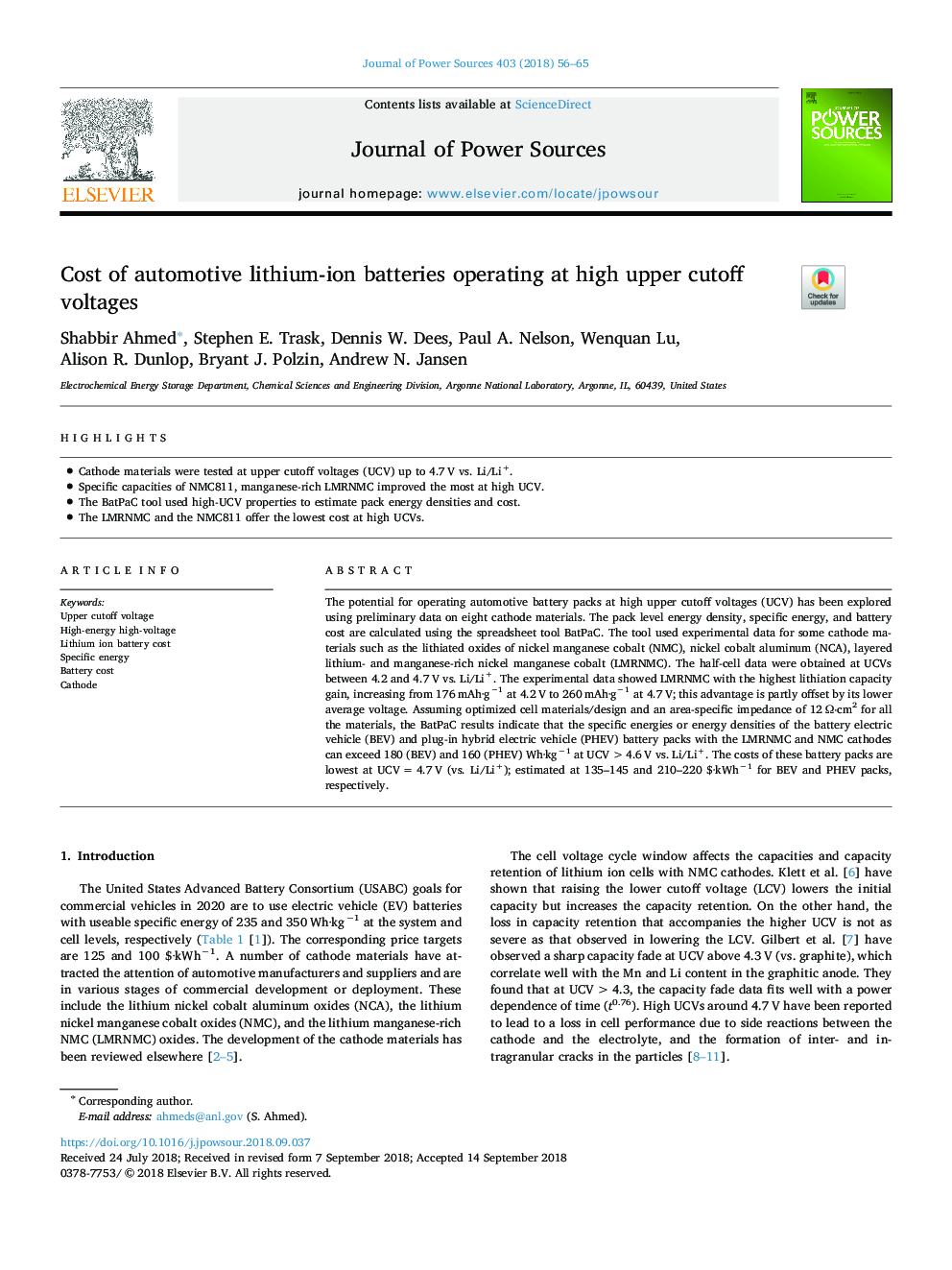| Article ID | Journal | Published Year | Pages | File Type |
|---|---|---|---|---|
| 11020197 | Journal of Power Sources | 2018 | 10 Pages |
Abstract
The potential for operating automotive battery packs at high upper cutoff voltages (UCV) has been explored using preliminary data on eight cathode materials. The pack level energy density, specific energy, and battery cost are calculated using the spreadsheet tool BatPaC. The tool used experimental data for some cathode materials such as the lithiated oxides of nickel manganese cobalt (NMC), nickel cobalt aluminum (NCA), layered lithium- and manganese-rich nickel manganese cobalt (LMRNMC). The half-cell data were obtained at UCVs between 4.2 and 4.7â¯V vs. Li/Li+. The experimental data showed LMRNMC with the highest lithiation capacity gain, increasing from 176â¯mAh·gâ1 at 4.2â¯V to 260â¯mAh·gâ1 at 4.7â¯V; this advantage is partly offset by its lower average voltage. Assuming optimized cell materials/design and an area-specific impedance of 12â¯Î©â
cm2 for all the materials, the BatPaC results indicate that the specific energies or energy densities of the battery electric vehicle (BEV) and plug-in hybrid electric vehicle (PHEV) battery packs with the LMRNMC and NMC cathodes can exceed 180 (BEV) and 160 (PHEV) Wh·kgâ1 at UCV>4.6â¯V vs. Li/Li+. The costs of these battery packs are lowest at UCVâ¯=â¯4.7â¯V (vs. Li/Li+); estimated at 135-145 and 210-220 $·kWhâ1 for BEV and PHEV packs, respectively.
Keywords
Related Topics
Physical Sciences and Engineering
Chemistry
Electrochemistry
Authors
Shabbir Ahmed, Stephen E. Trask, Dennis W. Dees, Paul A. Nelson, Wenquan Lu, Alison R. Dunlop, Bryant J. Polzin, Andrew N. Jansen,
